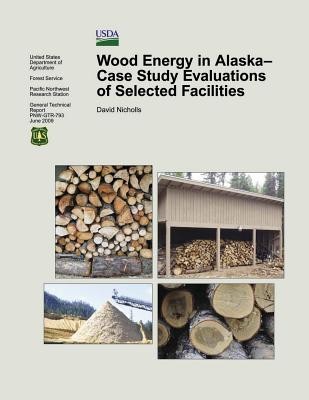
- We will send in 10–14 business days.
- Author: United States Department of Agriculture
- Publisher: CreateSpace Independent Publishing Platform
- Year: 2015
- Pages: 38
- ISBN-10: 1506119409
- ISBN-13: 9781506119403
- Format: 21.6 x 28 x 0.2 cm, softcover
- Language: English
- SAVE -10% with code: EXTRA
Wood Energy in Alaska-Case Study Evaluations of Selected Facilities (e-book) (used book) | bookbook.eu
Reviews
Description
Biomass resources in Alaska are extensive and diverse, comprising millions of acres of standing small-diameter trees, diseased or dead trees, and trees having lowgrade timber. Limited amounts of logging and mill residues, urban wood residues, and waste products are also available. Recent wildfires in interior Alaska have left substantial volumes of burned timber, potentially usable for biomass energy. Motivated, in part, by rising fuel prices, organizations across the state-including businesses, schools, and government agencies-have all expressed an interest in wood energy applications. Numerous sites have pursued feasibility studies or engineering design analysis, and others have moved forward with project construction. Recent advances in biomass utilization in Alaska have been enabled by numerous factors, and involve various fuel sources, scales of operation, and end products. Already, thermal wood energy systems are using sawmill residues to heat lumber dry kilns, and a public school heating system is in operation. Management policies on national forests and state forests in Alaska could determine the type and amounts of available biomass from managed forests, from wildland-urban interface regions, and from salvage timber operations. Biomass products in Alaska having potential for development are as diverse as wood pellets, cordwood (firewood), compost, wood-plastic composite products, and liquid fuels. In addition, new technologies are allowing for more efficient use of biomass resources for heating and electrical generation at scales appropriate for community power. This case study review considers successes and lessons learned from current wood energy systems in Alaska, and also considers opportunities for future bioenergy development.
EXTRA 10 % discount with code: EXTRA
The promotion ends in 18d.05:08:01
The discount code is valid when purchasing from 10 €. Discounts do not stack.
- Author: United States Department of Agriculture
- Publisher: CreateSpace Independent Publishing Platform
- Year: 2015
- Pages: 38
- ISBN-10: 1506119409
- ISBN-13: 9781506119403
- Format: 21.6 x 28 x 0.2 cm, softcover
- Language: English English
Biomass resources in Alaska are extensive and diverse, comprising millions of acres of standing small-diameter trees, diseased or dead trees, and trees having lowgrade timber. Limited amounts of logging and mill residues, urban wood residues, and waste products are also available. Recent wildfires in interior Alaska have left substantial volumes of burned timber, potentially usable for biomass energy. Motivated, in part, by rising fuel prices, organizations across the state-including businesses, schools, and government agencies-have all expressed an interest in wood energy applications. Numerous sites have pursued feasibility studies or engineering design analysis, and others have moved forward with project construction. Recent advances in biomass utilization in Alaska have been enabled by numerous factors, and involve various fuel sources, scales of operation, and end products. Already, thermal wood energy systems are using sawmill residues to heat lumber dry kilns, and a public school heating system is in operation. Management policies on national forests and state forests in Alaska could determine the type and amounts of available biomass from managed forests, from wildland-urban interface regions, and from salvage timber operations. Biomass products in Alaska having potential for development are as diverse as wood pellets, cordwood (firewood), compost, wood-plastic composite products, and liquid fuels. In addition, new technologies are allowing for more efficient use of biomass resources for heating and electrical generation at scales appropriate for community power. This case study review considers successes and lessons learned from current wood energy systems in Alaska, and also considers opportunities for future bioenergy development.


Reviews